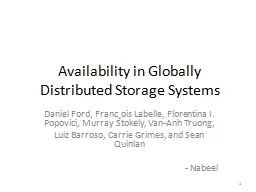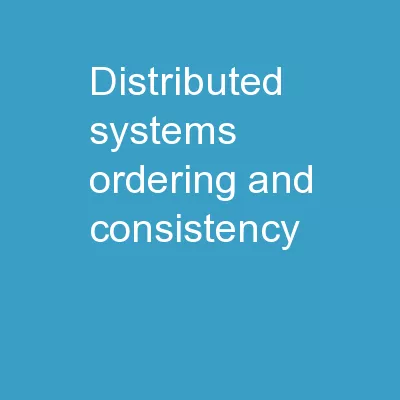PPT-Availability in Globally Distributed Storage Systems
Author : karlyn-bohler | Published Date : 2018-11-09
Daniel Ford Francois Labelle Florentina I Popovici Murray Stokely Van Anh Truong Luiz Barroso Carrie Grimes and Sean Quinlan Nabeel 1 Distributed Storage
Presentation Embed Code
Download Presentation
Download Presentation The PPT/PDF document "Availability in Globally Distributed Sto..." is the property of its rightful owner. Permission is granted to download and print the materials on this website for personal, non-commercial use only, and to display it on your personal computer provided you do not modify the materials and that you retain all copyright notices contained in the materials. By downloading content from our website, you accept the terms of this agreement.
Availability in Globally Distributed Storage Systems: Transcript
Download Rules Of Document
"Availability in Globally Distributed Storage Systems"The content belongs to its owner. You may download and print it for personal use, without modification, and keep all copyright notices. By downloading, you agree to these terms.
Related Documents














